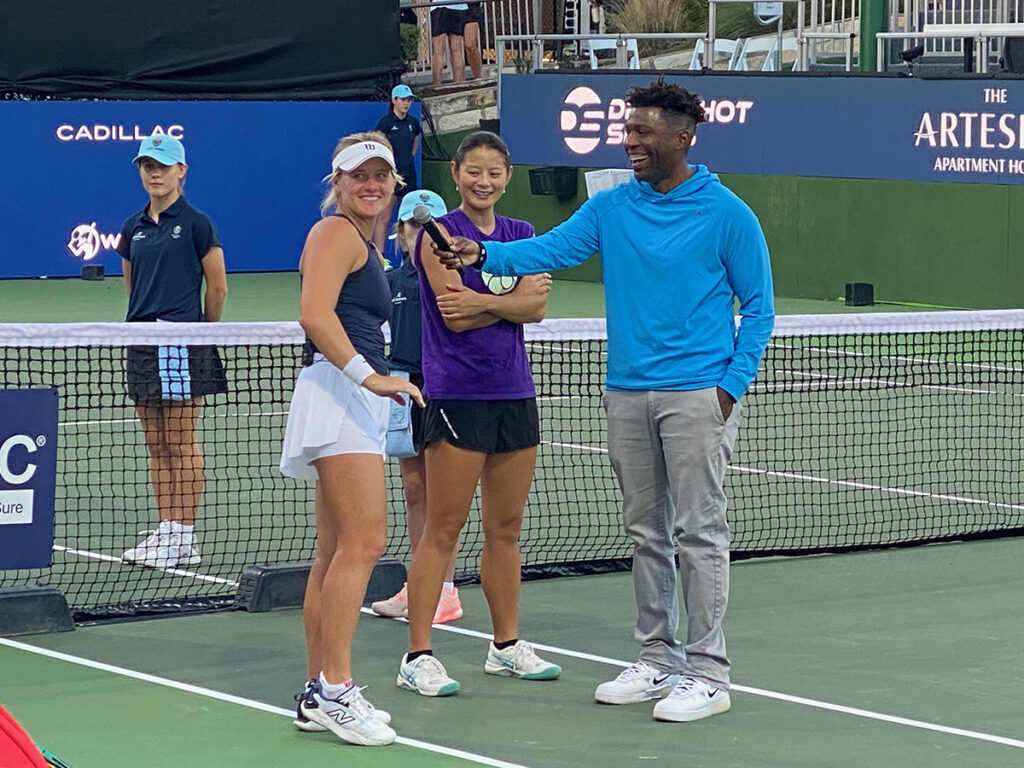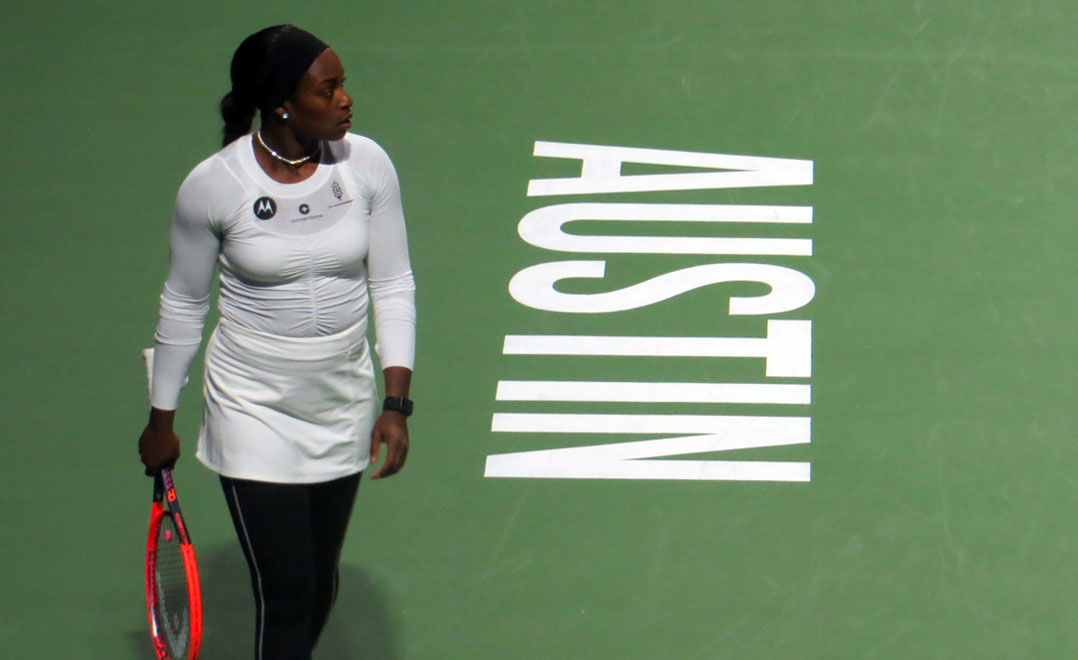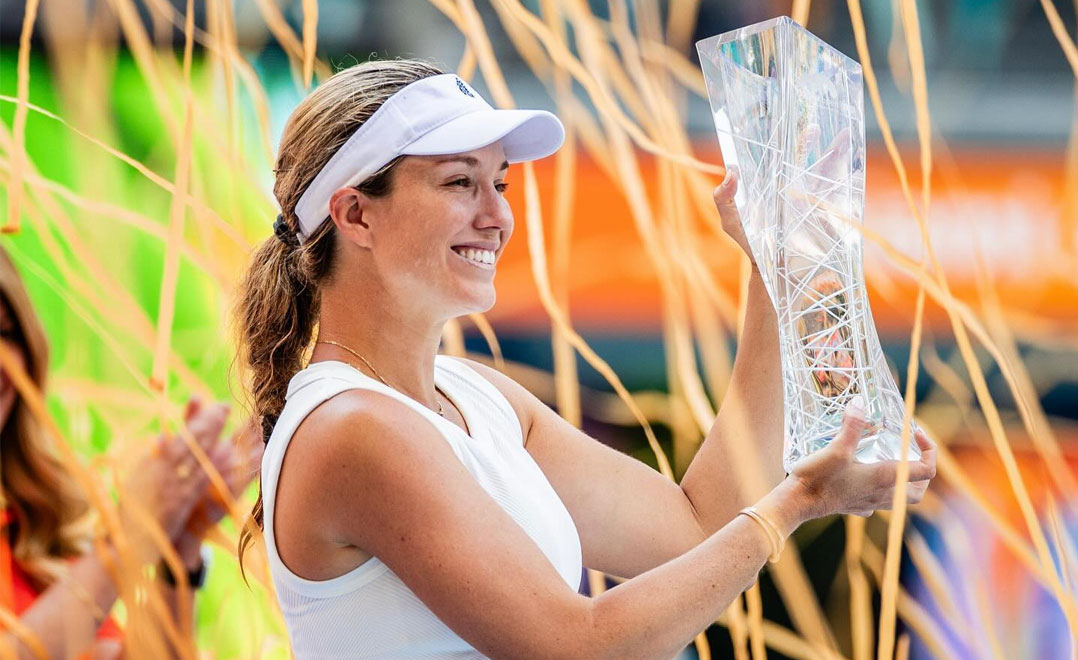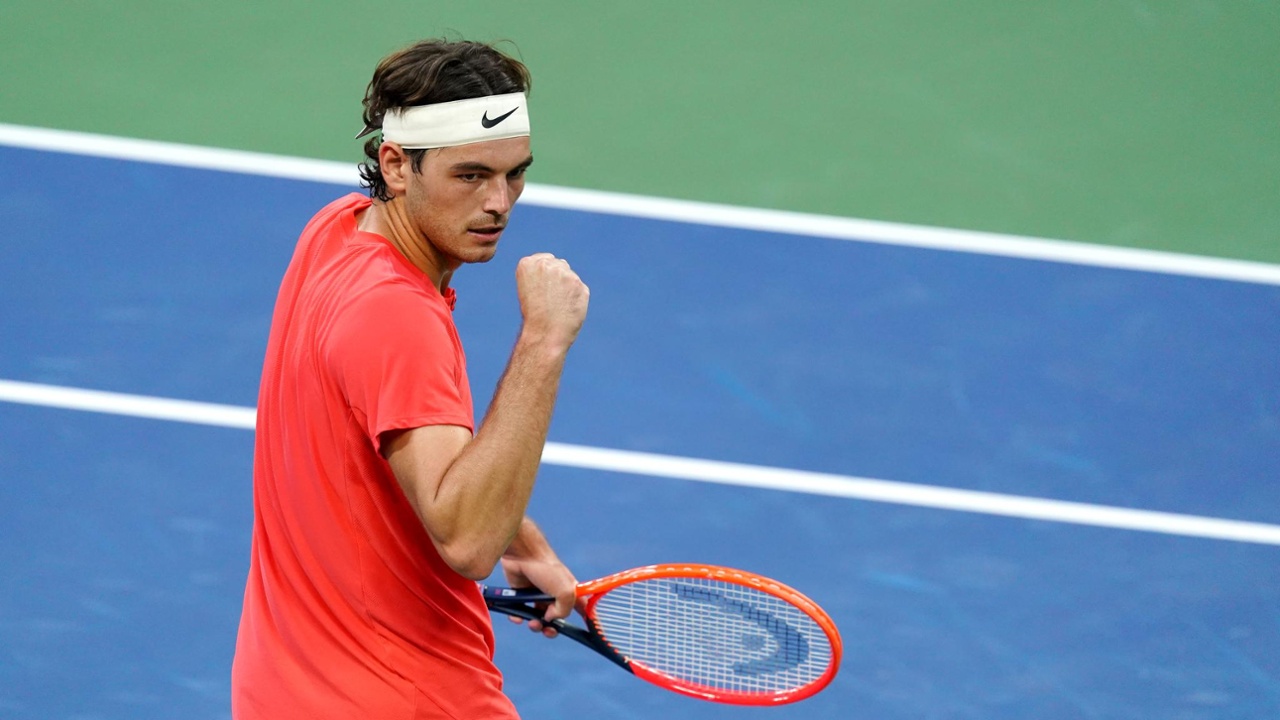By the time Danielle Collins played her tenth match in twelve days, she simply didn’t have the capacity to do another thirty-minute pre-match warmup.
Her body was telling her to preserve her energy, so she listened and obeyed.
“I think that’s one of the hardest things with the tennis is you’re constantly having to having to adapt and change your routine because things are constantly changing.”
Collins is in Austin, TX, playing in the second edition of the ATX Open. Last year she served as the tournament’s player ambassador in its inaugural year, so she has a bit of a legacy here.
She came straight from the Middle East, where she packed in those ten matches in twelve days. She notched a 7-5 6-0 win over Naomi Osaka in Abu Dhabi before falling to top seed Elena Rybkina in three sets, then followed that up with a deep quarterfinal run in Doha.
Maintaining habits and routines while globetrotting and occasionally playing into the wee hours of the morning isn’t easy.
“It’s been a long learning curve,” says Collins. “You don’t figure it out really in your first or second year on tour. I think it takes a little bit of time to figure out what works best, and I feel like now I’m finally at the point where I’m learning what’s working best and, you know, now I’m at the end of my career, so.”
The room shares a laugh.
That’s the great irony of life. Wisdom requires time and experience, and often we stop doing the thing that brought the wisdom before we could actually benefit from the wisdom we got from it.
What else can we do but laugh about it?
Wisdom and physical health move in opposite directions. Our prime years are when those lines intersect. Once they intersect, our job is to try to keep them as parallel as possible the rest of the way home.
In tennis, those lines usually cross somewhere in the late twenties. Retirement typically follows in the early thirties.
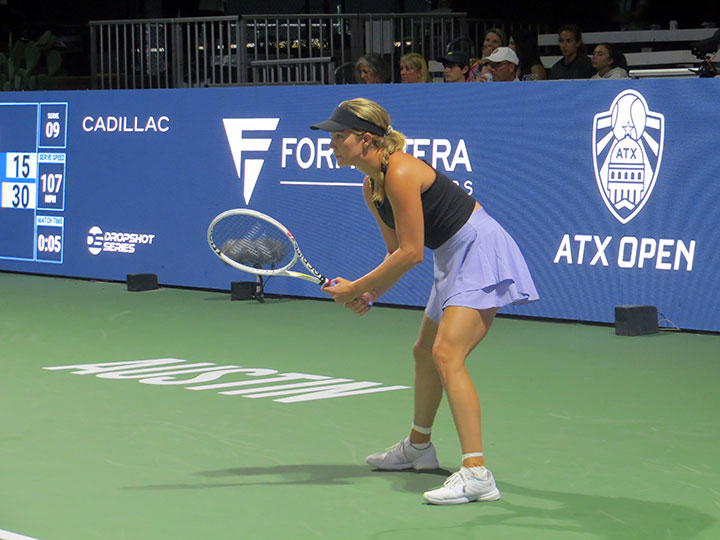
Danielle Collins is there.
She announced this would be her last year on tour during the Australian Open. She’s still got the goods—she had world No. 1 Iga Swiatek on the ropes in Melbourne—but she’s ready for a return to normalcy and an opportunity to pursue other interests.
Upstart Peyton Stearns is at the other end of the spectrum.
Like the ATX Open, she begins her second year on tour here in Austin where she debuted a year ago and earned her first WTA Tour win.
It’ll be a nice career synchronicity for her since she played college tennis at The University of Texas at Austin. While playing for the Longhorns, she won the school’s first ever women’s NCAA Singles Championship. She probably doesn’t hear “Texas Fight” chanted around the world, but she hears it here.
Like Collins, Stearns also took a 25-hour flight back from Dubai last week, but for her it was still new. Year two will breed patterns and familiarity and an opportunity to fine-tune life on tour with a bit of experience under her belt.
Her rookie year was promising. She reached No. 43 in the world rankings, competed in all four majors, shared the court with some of the sport’s biggest names, and even scored wins over former Grand Slam champions.
She had an oh-so-close breakout moment at the U.S. Open. She made round of 16 before falling to Wimbledon champ Marketa Vondrousova. Reaching the quarters of her home slam could have made her a household name.
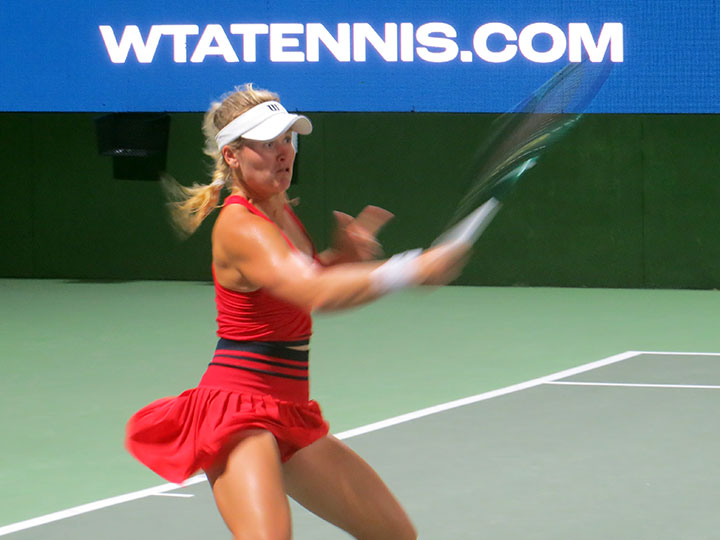
According to Stearns, the first year on tour is a lot. “You have to learn how to manage your time.”
Sloane Stephens would know. The former U.S. Open champion has been around the block a few times herself. She, too, is competing in Austin for the second year in a row, and she too, just came from Dubai.
“I like to keep good routines and keep them very simple. Obviously, traveling week to week is not easy. So I think a lot of things can fluster you.”
To wit, she presents her fingernails, commenting with feigned exasperation, “I normally always get my nails done every week and you can see that I’m not in a good space.”
Keeping your nails done is code for seeking normalcy in an abnormal world. Staying balanced.
“You don’t have enough time to do the things that you want to do for yourself,” Stephens continues. “You get frustrated. There are so many things that can go wrong and I think being able to really manage that, keep kind of an even keel amongst all of the things that are going on in your tennis world and then obviously in your personal life. Finding a good balance is really key.”
Tour life ain’t easy.
Players are in a new country every few weeks. New time zones, cultures, languages, foods. Different beds and hotels. Strange faces ushering them around and asking them questions. One airport after another. Permanently living out of a suitcase.
It is glamorous and they’re lucky on many levels, sure. Who doesn’t want a job that takes you from Paris to Monte Carlo, New Zealand to New York, and Transylvania to Acapulco?
But when it comes to being a high-performance athlete, it’s hard to imagine a more compromising lifestyle. The body gets wrecked. So does the mind. Tennis is predominantly mental—when the mind goes away, so do the victories.
Most professional athletes live highly regimented lives. Wake up and eat the same breakfast at the same time. Drive to the practice facility at the same time. Compete at prescheduled times for a predetermined amount of time. Collect a guaranteed salary. Repeat the next day.
None of that holds true for professional tennis players.
Collins explains that “having a rigid mentality can be helpful as an athlete, but I think in this environment you have to be incredibly flexible and our schedules obviously change very quickly.”
“I find with most of us we struggle a lot with our sleep.” Finishing a match after midnight, playing again the next afternoon, and then flying fourteen hours to another continent will do that to you.
With regard to diet, Collins observes that “some weeks you’re not going to get what you need. And depending on what part of the world you’re in, you have to be very adaptable, which can be hard when you have food allergies.”
Food is fuel. Peak performance requires peak nutrition, and it may not be so easy to get exactly what you need in Hua Hin, Thailand, for example.
So there’s a real comfort for these three in Austin, a famously laid-back city that maintains a small-town vibe despite explosive growth in recent years.
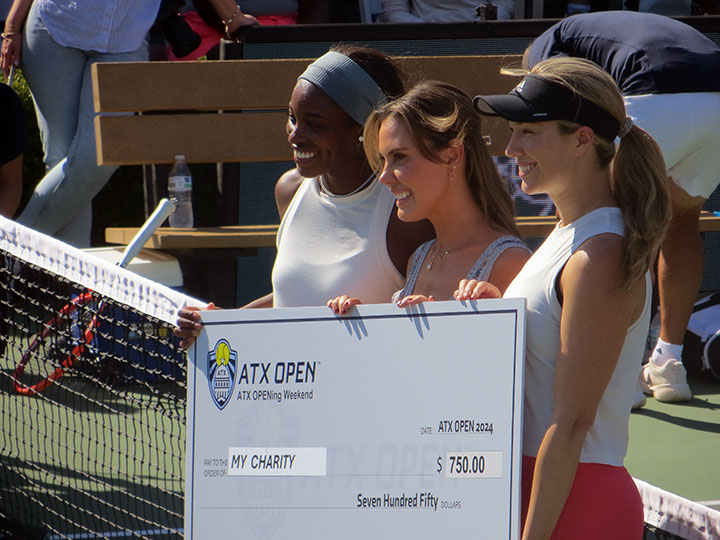
In Austin, adaptation means slowing down, seeing friends, and eating well.
The first thing Peyton Stearns did after sleeping off that Dubai flight was to visit her old college friends, coaches, and teammates on campus.
She was greeted at The University of Texas’s tennis facility with another adaptation that comes with success: “They’ve added some pictures on the wall. So I got to go see those and hit with the guys.”
After that, she went to her favorite local burrito joint, Cabo Bob’s. When the tournament is over, she’ll hit up Austin’s beloved creamery, Amy’s Ice Cream.
Danielle Collins got coffee and breakfast tacos with friends, followed by some trinket shopping. Possibly even some house shopping.
“I consider this my home tournament,” she says. “I just feel like it’s such a fan-friendly event, but also really athlete-friendly. I think everyone that’s a part of this tournament and helping run the tournament really cares about us as athletes and makes it a wonderful week. Everything from where we get to stay to the player hospitality.”
Sloane Stephens agrees.
“It’s not very often that you play a tournament at a club,” she says, “where it’s very small and like, an intimate feeling. So I think that’s also really nice. Most of the time we play at massive venues with fifty courts and there’s just a lot always going on, a bunch of stimulation. I think here, it’s really nice, like before Indian Wells and Miami, to be able to come to a smaller event [and] be more intimate, have the smaller players areas…all of that stuff matters.”
Spoken like a true veteran. Rather than finding balance in your schedule, you schedule the balance. That’s the secret to unlocking long-term success.
There are “a lot of cool things here in Austin,” says Stephens, predicting that “more people will probably end up coming here now that I’ve said all of this, so that’s unfortunate,” with a final laugh.
She’s right. The ATX Open won’t stay under the radar for long. Austin is a welcoming town. A sticky place that is sneaky good at bringing people back. Once more players get a taste of it, it’s sure to become a WTA hotspot.
